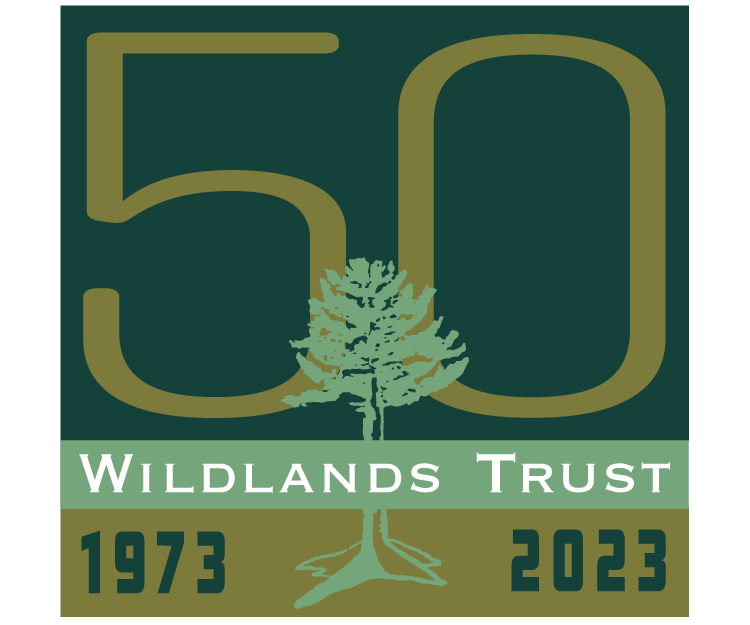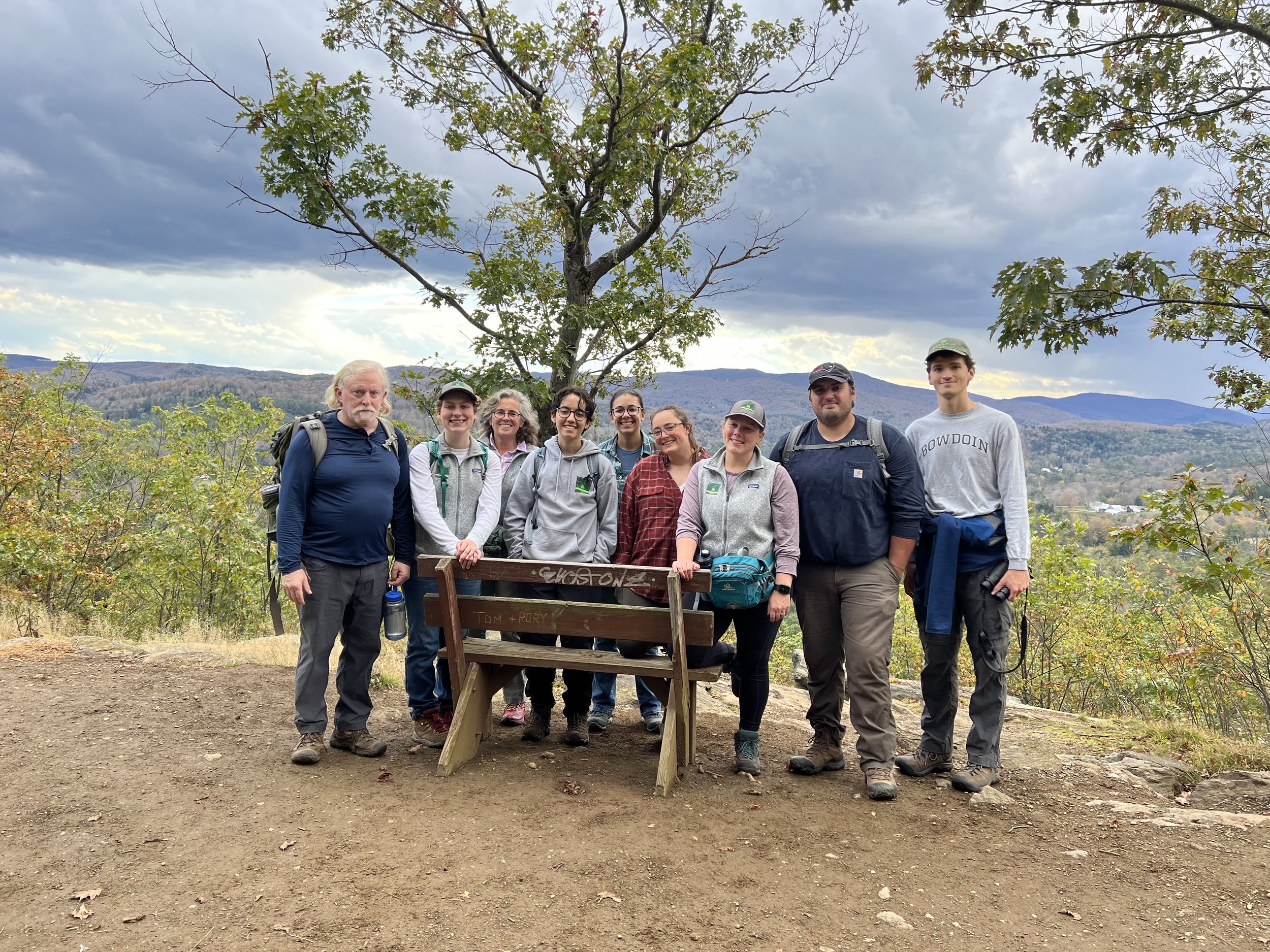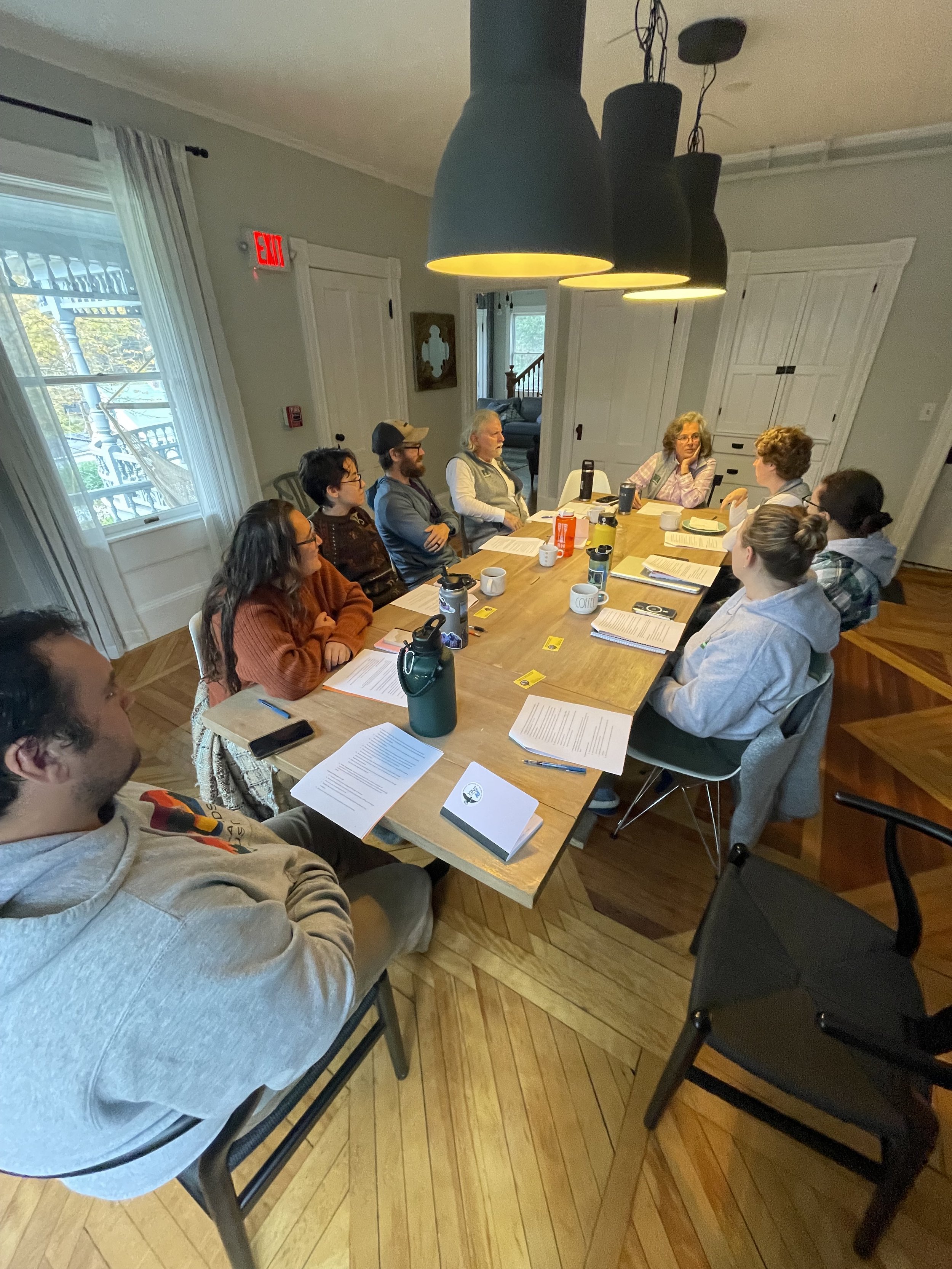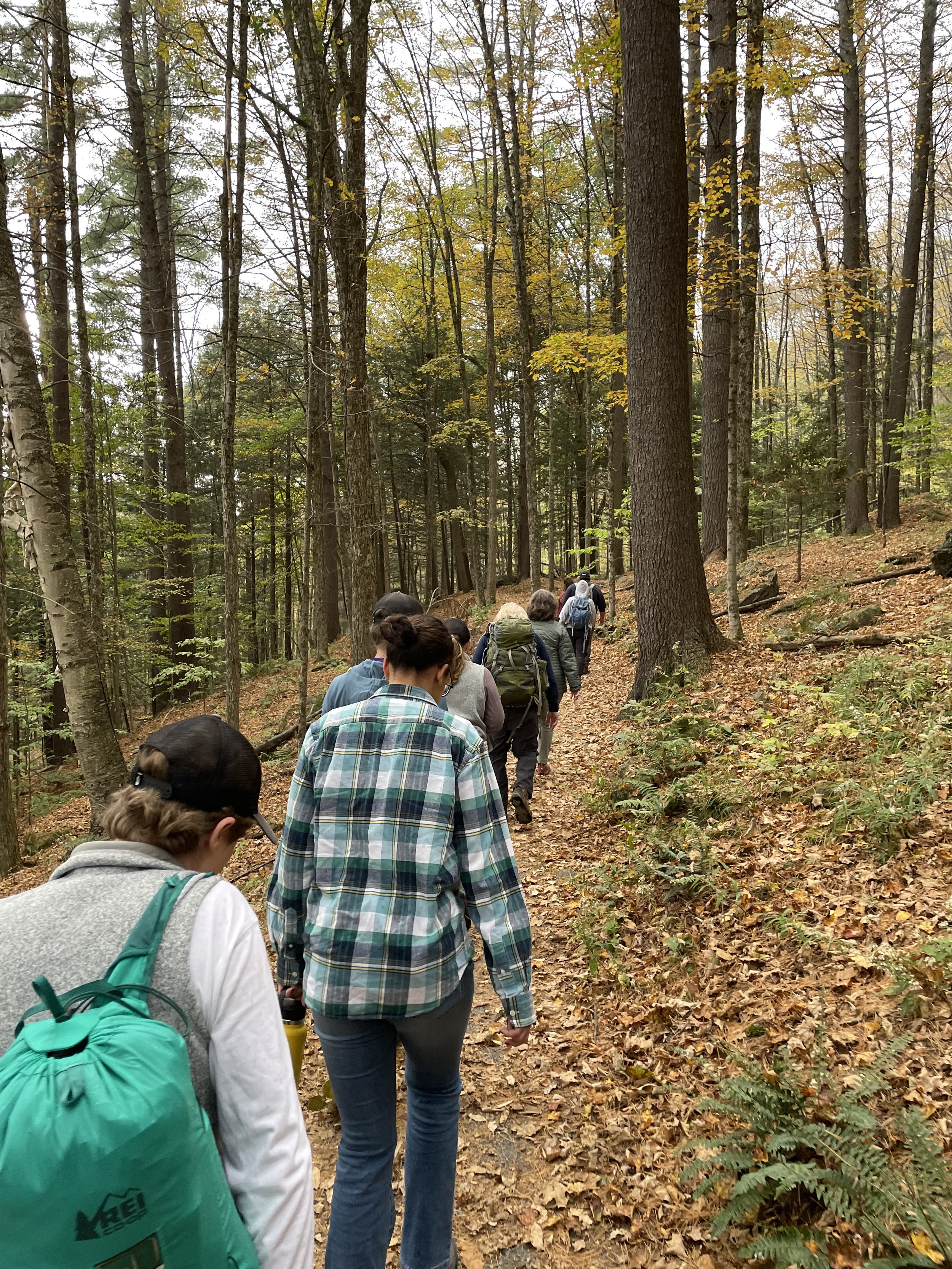From left: Communications Coordinator Thomas Patti, Key Volunteer Skip Stuck, Land Protection Assistant Tess Goldmann, Membership & Digital Media Coordinator Kyla Isakson, and Programming Coordinator Max Phelps at the Wildlands table at the Massachusetts Land Conservation Conference in Amherst, MA.
In late March, Wildlands Trust staff and volunteers ventured far and wide to learn new and improved ways to advance our mission in Southeastern Massachusetts. Two conferences—one in Georgia and the other in western Mass—left our team inspired and empowered to elevate our service to the people and places of our region. Read on to learn more about both.
---
Sustainable Trails Conference – Lake Lanier Islands, Georgia
By Erik Boyer, Director of Field Operations
From March 19 to 21, Stewardship Operations Manager Owen Grey, Stewardship Programs Manager Zoë Smiarowski, and I attended the Sustainable Trails Conference on Lake Lanier Islands, Georgia. Since a focus of this year’s conference was on building diverse trail communities, we thought it would be a great opportunity to learn from stewardship practitioners across the country and world about their past successes and failures as we ramp up our own community-building efforts here in Southeastern Massachusetts, including volunteer programming at the Stewardship Training Center.
Several workshops left us with valuable insight to apply to our work moving forward. Jordan Sellers of the Blue Ridge Conservancy spoke about the benefits of surveying the plant and animal life along prospective trail corridors and incorporating the findings into subsequent trail design. This method seemed like a promising way to balance recreation and habitat values on conservation lands, always a priority at Wildlands.
In another illuminating session, Stephen Kasacek and Michael Smith of the Outdoor Sport Institute presented a dynamic partnership working to build a trails culture in rural Maine. Raising awareness and resources for public outdoor recreation comes with unique challenges in rural communities, and their holistic approach offered some exciting solutions.
Then, Peter Jensen of Peter S. Jensen & Associates, LLC shared a few creative renovation options for trails degraded by extreme overuse. For example, covering roots and rocks along the trail can both improve accessibility and reduce erosion caused by visitors moving around the obstacle.
A final roundtable discussion explored opportunities to minimize conflicts on multiuse trails, such as those between hikers and mountain bikers. Improving visibility around tight turns, for instance, can help trail users spot and avoid potential collisions. On the other hand, tight turns can also serve to slow mountain bikers down, keeping bikers and pedestrians safe.
All of these sessions, not to mention the many informal conversations we had with land stewards from around the world, left us with plenty to think about on our long trip back to Plymouth and still today. A key takeaway: as Wildlands extends its reach beyond our traditional coverage area and into more rural and urban communities, we must go outside of our comfort zone to engage new audiences in our work. After all, a trail system is only as effective as its host community is aware, enthusiastic, and invested in its success. We look forward to applying both the technical and social lessons of the conference to our mission of connecting more people with the mental, physical, and spiritual benefits of outdoor recreation.
Director of Field Operations Erik Boyer and Stewardship Operations Manager Owen Grey at Slow Pour Brewing in Lawrenceville, Georgia.
Massachusetts Land Conservation Conference – Amherst, Massachusetts
Meanwhile, Wildlands staff members Max Phelps, Kyla Isakson, Tess Goldmann, and Thomas Patti, along with key volunteer Skip Stuck, ventured to Amherst, Massachusetts, for the annual Massachusetts Land Conservation Conference, hosted by the Massachusetts Land Trust Coalition. The night before the conference, the Wildlands staff members joined the Early Career Conservation Network at MacLeish Field Station in Whately, where interdisciplinary artist Gina Siepel presented their project “To Understand a Tree” and field station manager Paul Wetzel gave a tour of the grounds, featuring an American chestnut tree orchard.
At the conference itself, the Wildlands team learned about such diverse topics as planned giving, farmland protection tools, creating antiracist land trusts, and watershed-scale collaboration to advance climate resilience. We left no stone unturned!
The highlight of the conference was the keynote address by Darren Ranco, PhD, a citizen of the Penobscot Nation, Professor of Anthropology, Chair of Native American Programs, and Faculty Fellow at the Mitchell Center for Sustainability Solutions at the University of Maine. Dr. Ranco’s presentation, “Centering Indigenous Peoples and Nations in Land Protection and Conservation: Wabanaki Possibilities,” explored his work with the Wabanaki Commission on Land and Stewardship. By moving at the speed of trust, Dr. Ranco said, land trusts and Indigenous people can restore their relationships with each other and with the lands they mutually cherish.
All the while, we spread the word about our Stewardship Training Center among fellow conservationists from across the state at our Wildlands table.
It was another great year at the Massachusetts Land Conservation Conference! We look forward to continuing to support and attend this important opportunity for the state land conservation community to exchange stories and ideas for the benefit of our shared missions.














